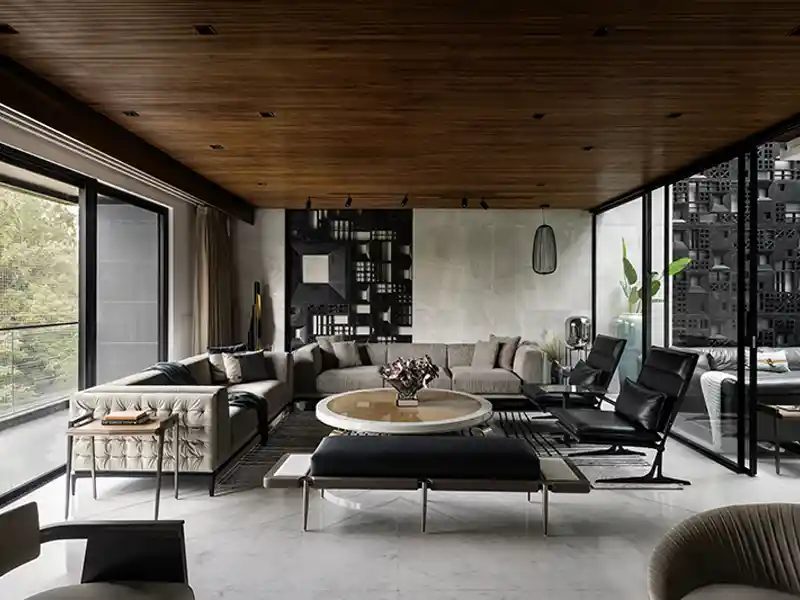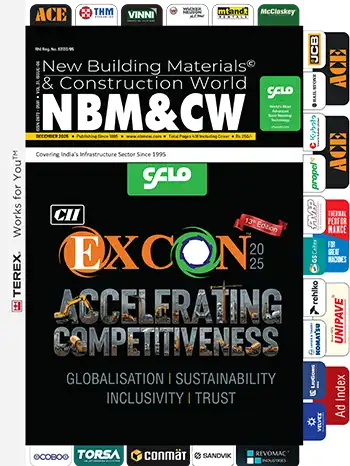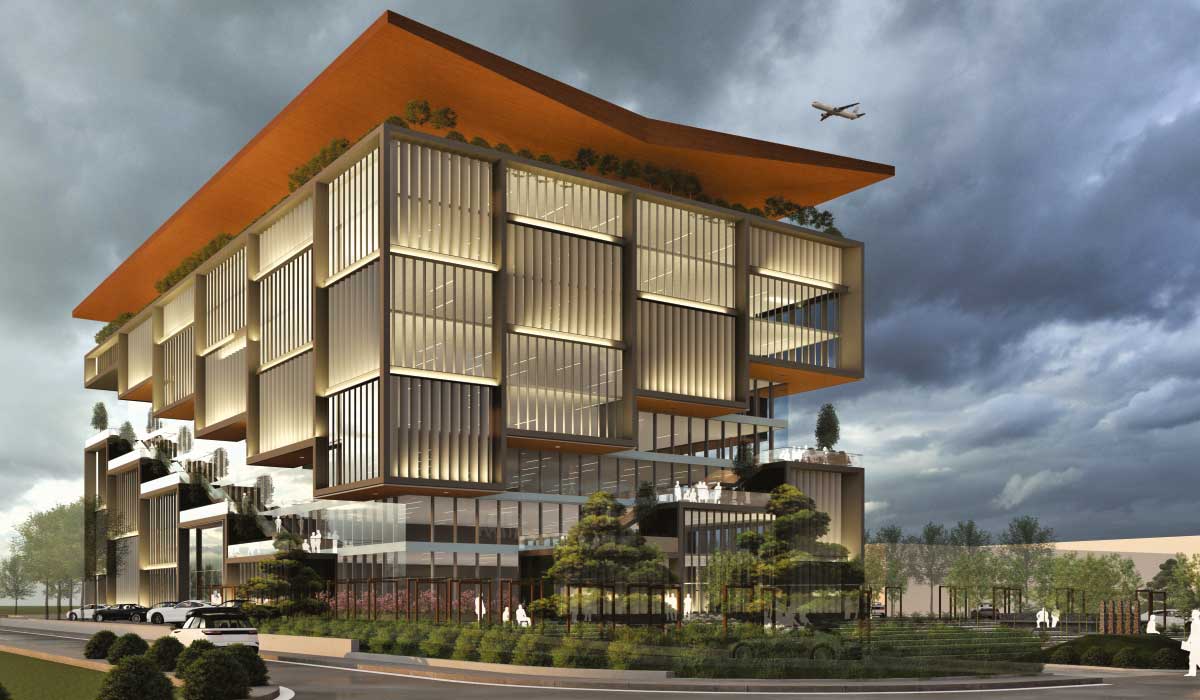 The unique projecting and receding facade scheme is a direct result of the use of a steel composite structural system that facilitates lightweight construction and thin structural members
The unique projecting and receding facade scheme is a direct result of the use of a steel composite structural system that facilitates lightweight construction and thin structural membersFact File
Name of Project: AMTRON BPO Tower
Typology: Workspace
Location: Tech City, Bongora, Assam
Client: Assam Electronic Development Corporation
Site Area: 7892.10 sqm
Built-Up Area: 24736.49 sqm
Structural Consultant: Global Design Engineers
Mechanical & Electrical: V Consulting
Landscape: Integral Designs International Studio
HVAC & Plumbing: V Consulting
Façade: Axis Facade
Status: Construction not started
Located in the vicinity of the Guwahati Airport, and away from the city centre, its context poses challenges as well as suggests ways to tap into the region’s strong connection with nature and create a unique architectural response. The site layout emerges from the architect’s commitment to creating a pedestrian-friendly campus that promotes the idea of ‘walk to work’. Traffic congestion on the site is resolved by placing the drop-off and pick-up points at the opposite ends of the building, which allows the employees to walk through a landscaped plaza in the front.
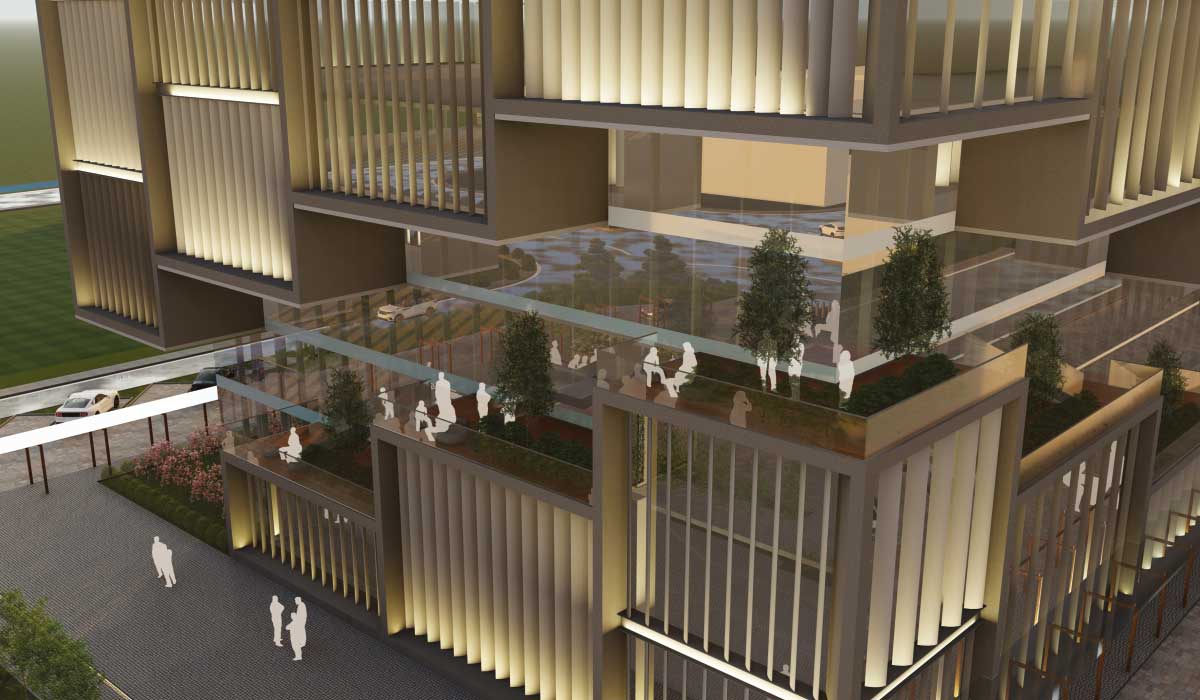 Mutual shading and sun-tracking louvres on the South-West facade minimise heat gain and eliminate the dependency on artificial air-conditioning systems
Mutual shading and sun-tracking louvres on the South-West facade minimise heat gain and eliminate the dependency on artificial air-conditioning systemsWork & Leisure
The design builds upon the notion of creating a balance between work and leisure, that translates into interconnected stepped terraces on the exterior façade. This scheme defies the conventional designs of the office and reinforces the notion that workplaces are now consciously creating pauses as an appendage to closed cubicles.
Within the eight-storey structure, functions are planned around a compact, central core housing lifts, staircases, toilets, and other ancillary spaces. This layout increases spatial efficiency by minimizing corridors and opening the building to a 360-degree peripheral view. Open floor plates, co-working spaces, and green terraces have been incorporated on the upper floors.to allow work flexibility and efficiency.
Formal offices are stacked on the upper floors, where independent floor plates supplemented by 4m wide leasable and usable terraces allow business owners to expand and contract their functions according to their needs. The flexibility provided by this layout allows 100% of the space to be leased out for different purposes. Common functions such as yoga area, health club, and cafeteria are also planned on the eighth floor, acting as a community interactive space.
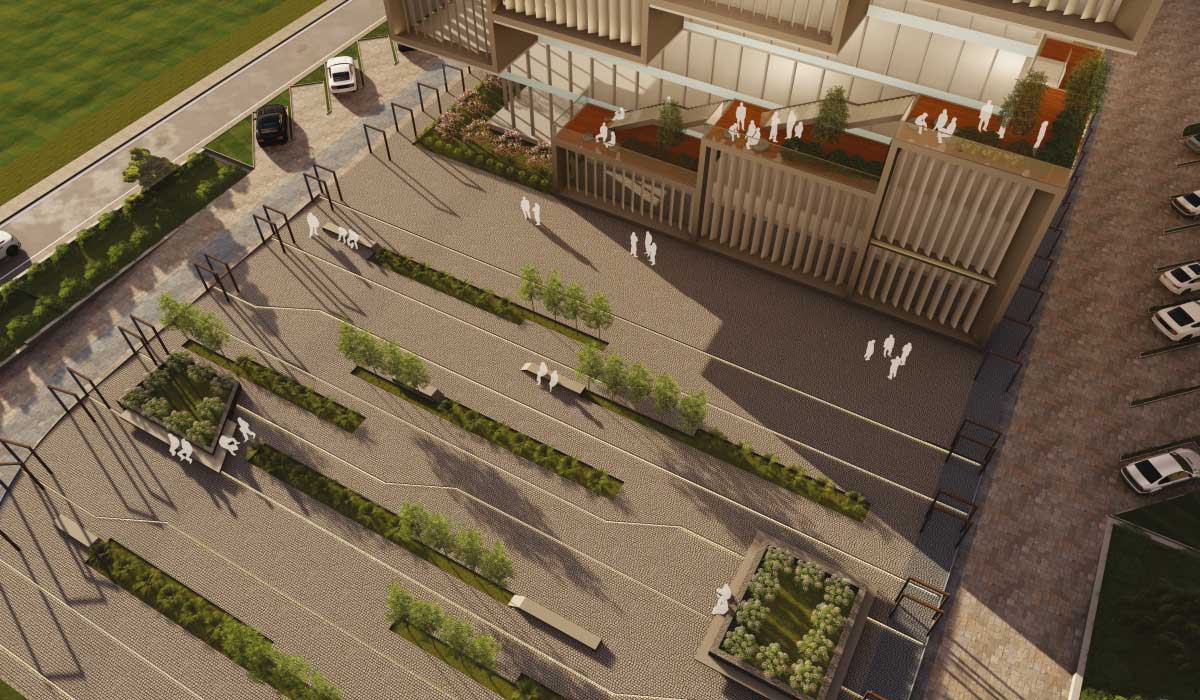
The Facade
At a glance, the facade seems to be a play of solids and voids, composed in a rhythmic pattern of square and rectangular box frames with vertical louvres. However, the scheme is an outcome of a well-thought functional, structural, climatic, and aesthetic logic. The glass void created by landscaped terraces splits the building into two masses, evoking the imagery of a floating structure on the top.
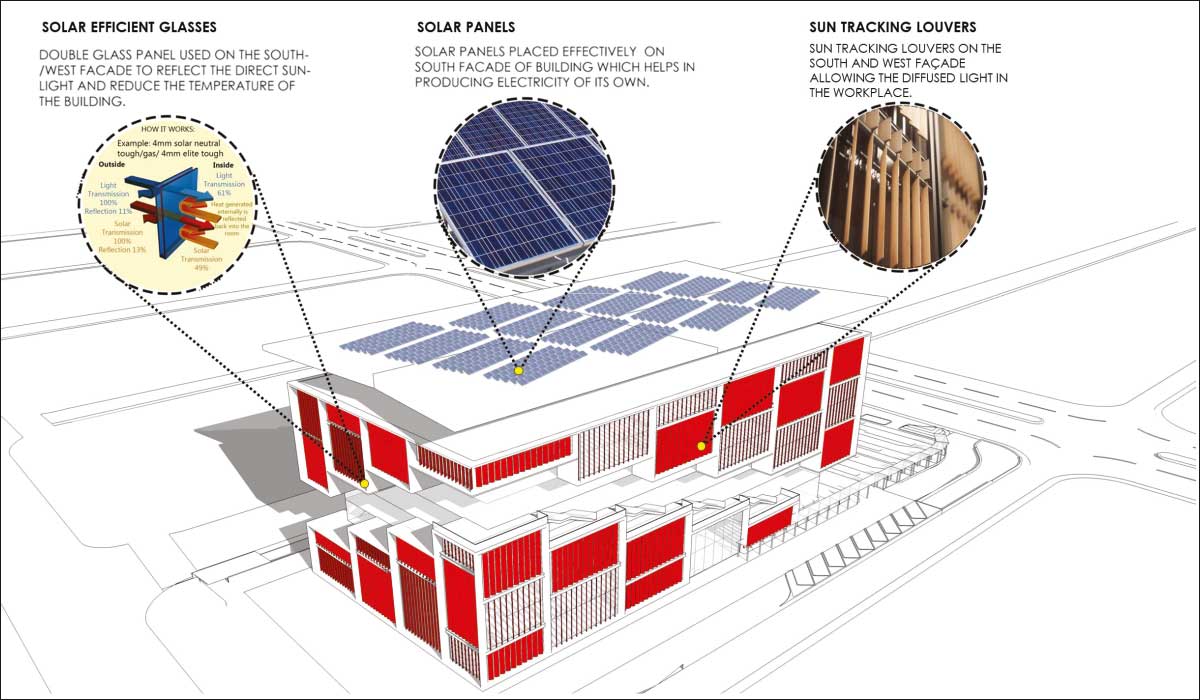
The terraces are further connected by an external staircase that envelopes the built mass, suggesting movement and interaction between various levels. They are balanced by repeating solid box frame modules intended to counter the monotony that could otherwise arise from a monolith glass facade. Their repetition is, however, broken down by the double-height volume delineating the main entrance to the building, whose seamless structural glazing is recessed from the main facade to draw attention and protect from direct sunlight.
The design aims to create a positive impact on the environment with features that include a steel composite structural system for lightweight construction and thin structural members. The material palette is chosen to suit the traditional roots of the region and also the modern culture.
Ar. Anand Sharma, DFI
Movable louvres add textural and spatial variation to the visual scheme. At the same time, shadow patterns created on the glazed surface accentuate the experiential value of the facade and create a unified visual composition.
The unique projecting and receding facade scheme is a direct result of the use of a steel composite structural system that facilitates lightweight construction and thin structural members. The construction system allows up to 12m column-free spaces in the interior and speeds up the construction, which was required by the brief. The structure derives its rigidity from the solid RCC core, which also supports the canopy on the roof.
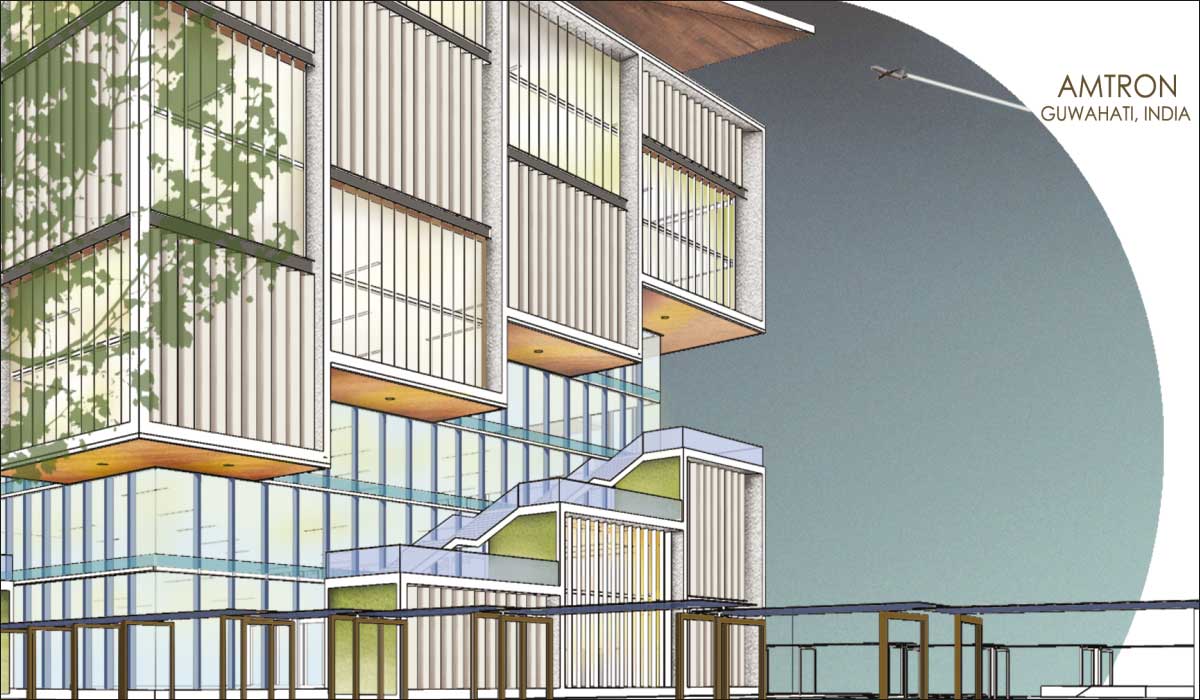 Zinc and aluminum as cladding materials ensure protection from weathering due to rain
Zinc and aluminum as cladding materials ensure protection from weathering due to rainThe material palette is both modern and traditional, connecting to the region’s natural root and its aspirations for the 21st-century. RCC structure, and glazing while structurally necessary, are balanced by recycled wood panels for ceilings and roof to infuse regional identity. The use of zinc and aluminium as cladding materials ensure that the structure remains protected from weathering due to heavy rain.

Climate Responsive Design
The design aims to create a positive impact on the environment and relies on passive and active, climate-responsive strategies. Mutual shading and sun-tracking louvres on the South-West facade minimize heat gain and eliminate the dependency on artificial air-conditioning systems. The use of solar-reflective glazing further helps maintain the indoor temperature while allowing adequate lighting into the interiors. Green terraces on the facade, combat the heat island effect that could otherwise arise due to glass structures.
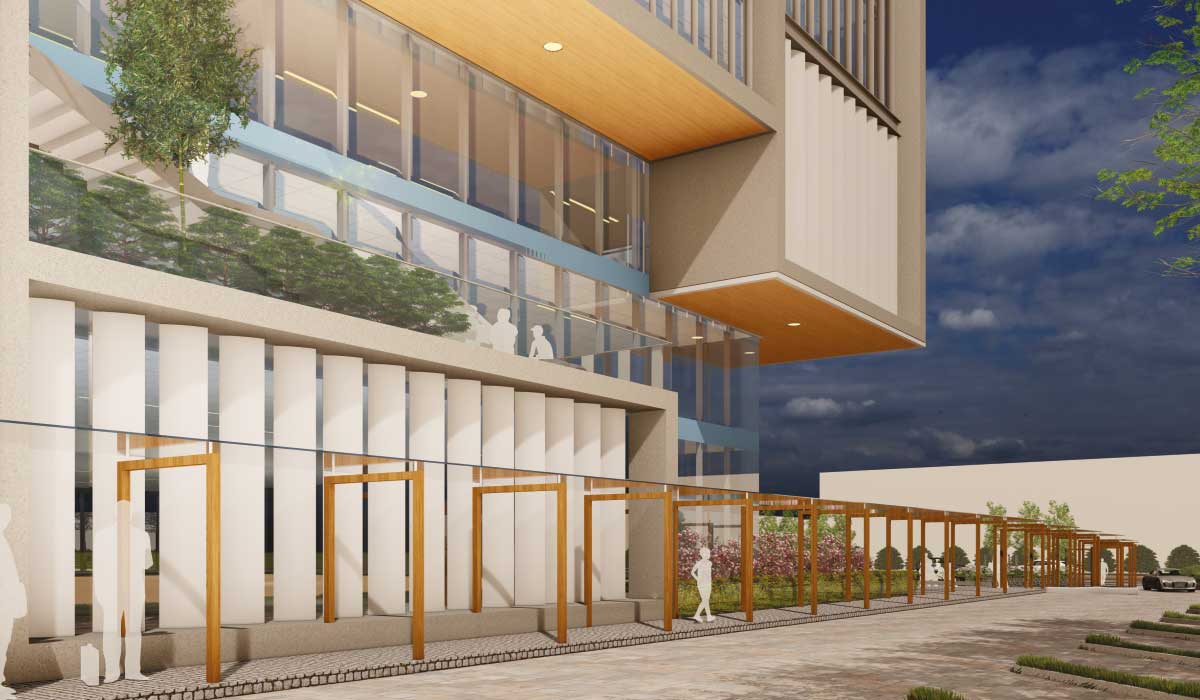 Movable louvres add textural and spatial variation to the visual scheme
Movable louvres add textural and spatial variation to the visual schemeSolar panels are installed on the roof to bring down energy consumption. Water systems are designed to allow rainwater harvesting, and its judicious usage is ensured through a drip-irrigation system. Wastewater recycling methods allow the reuse of water for landscape done mostly using native vegetation that adapts itself to the climate.










